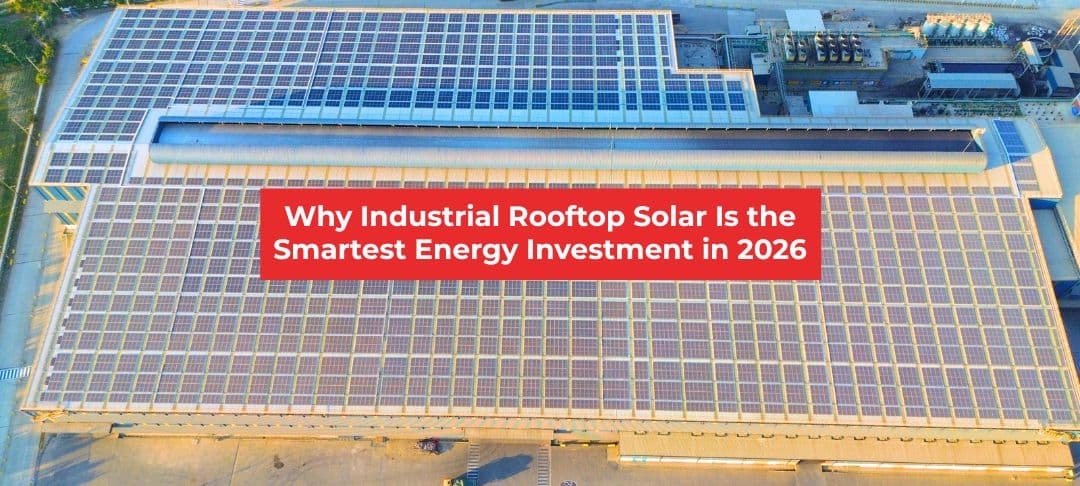The Future of Solar Energy: Trends to Watch
Published at - October 20, 2024
As the world shifts toward sustainable energy solutions, solar energy stands out as a key player in the transition to a cleaner future. With advancements in technology, decreasing costs, and increasing governmental support, solar energy is poised for significant growth. Solar energy promises to reduce our reliance on fossil fuels, also aims to enhance energy security, increase economic growth, and contribute to global climate goals. Solar energy is becoming increasingly accessible, making it an integral part of our energy landscape from innovative financing models to community-driven initiatives.
1. Technological Advancements
a. Enhanced Efficiency
In Solar technology's recent developments , particularly in materials such as perovskites, promise higher efficiency and lower production costs. Researchers are also exploring multi-junction technology, which combines multiple layers of solar cells to capture more sunlight, potentially pushing the boundaries of solar energy generation.
b. Bifacial Solar Panels
Bifacial solar panels, which capture sunlight from both sides, are gaining popularity. These panels can produce up to 30% more energy than traditional panels by harnessing reflected sunlight from the ground. Their effectiveness in various environments, such as snowy or reflective areas, makes them an attractive option for both residential and commercial installations
2. Energy Storage Solutions
a. Battery Innovations
As solar energy generation relies on sunlight, efficient energy storage systems are critical. Innovations in battery technology, particularly lithium-sulfur and solid-state batteries, are set to enhance storage efficiency and longevity. Hybrid systems that combine different types of storage solutions are also emerging, optimizing performance for consumers. b. Grid Integration Smart grids facilitate efficient energy distribution and allow for better integration of solar power. Demand response programs encourage energy use when solar production is high, helping to balance supply and demand in real time.
3. Solar Integration with Smart Technology
a. Smart Energy Management Systems
Smart energy management systems enable real-time monitoring of solar energy production and consumption. Automated controls can adjust energy use based on availability, maximizing the benefits of solar power.
b. IoT in Solar Energy
The Internet of Things (IoT) is transforming solar energy systems, connecting devices for enhanced efficiency. Data analytics can help optimize performance and predict maintenance needs, ensuring systems operate at peak efficiency.
4. Community Solar Projects
a. Shared Solar Initiatives
Community solar initiatives allow individuals and businesses to invest in shared solar power systems. This approach makes solar accessible to those without suitable rooftops, fostering local economic development and community engagement in renewable energy initiatives.
b. Regulatory Support
Government incentives and supportive policies are crucial for encouraging participation in community solar projects. Many states are implementing programs that promote investment in shared solar systems, creating a win-win for communities and investors.
5. Policy and Regulatory Support
a. Government Incentives
Tax credits, rebates, and renewable energy standards are all driving the adoption of solar energy. These financial incentives not only encourage installations but also help foster innovation in the sector.
b. International Agreements
Global cooperation on renewable energy initiatives is vital. Countries are making ambitious commitments to increase their solar capacity, reflecting the importance of solar energy in achieving international climate goals.
6. Global Expansion
a. Off-Grid Solutions
In developing regions, off-grid solar solutions are providing electricity access to those who need it most. Solar home systems and mini-grids are empowering rural communities, offering sustainable energy solutions that can change lives.
b. Investment Trends
Emerging markets are leading the way in solar adoption, attracting foreign direct investment. As these regions develop their solar industries, the demand for affordable and efficient solar technology will continue to rise.
7. Corporate Sustainability Initiatives
a. Corporate Power Purchase Agreements (PPAs)
More companies are signing long-term contracts to purchase solar power directly from producers. These Corporate PPAs not only secure stable energy supplies but also drive new solar projects, contributing to corporate sustainability goals.
b. Sustainability Reporting
Companies are increasingly held accountable for their renewable energy usage. Transparency in sustainability reporting is becoming essential as consumers demand more responsible business practices.
8. Solar Panel Recycling
a. Current Challenges
As solar installations grow, so does the need for effective recycling methods. Many panels currently end up in landfills, raising environmental concerns about waste management and material recovery.
b. Innovations in Recycling
Advancements in recycling technologies are emerging, focusing on recovering valuable materials like silicon and silver from old panels. Regulatory frameworks promoting responsible recycling practices are also crucial for a sustainable solar industry.
9. Solar Thermal Energy
a. Concentrated Solar Power (CSP)
While photovoltaic panels dominate the solar market, solar thermal technology, particularly Concentrated Solar Power (CSP) systems, is gaining attention. CSP harnesses the sun's heat for electricity generation and offers efficient energy storage options.
b. Hybrid Systems
Combining solar thermal technology with other renewable sources creates hybrid systems that enhance overall energy efficiency. These systems can help reduce reliance on fossil fuels and promote a more sustainable energy landscape.
10. Solar-Powered Vehicles
a. Emerging Technologies
The automotive industry is increasingly integrating solar energy into vehicle design. Solar-powered vehicles and solar charging stations are being developed to reduce reliance on traditional charging methods, showcasing the potential for solar in transportation.
b. Environmental Impact
Solar-powered transport solutions can significantly reduce carbon footprints. As technology advances, solar energy could transform the way we think about mobility and energy consumption in the transportation sector.
11. Decentralized Energy Systems
a. Microgrids
Decentralized energy systems, such as microgrids, empower communities to generate and consume their energy. These systems enhance resilience against grid outages and reduce transmission losses, promoting local energy independence.
b. Energy Cooperatives
Community-led energy cooperatives are emerging, enabling local stakeholders to collaborate on solar projects. This model fosters local ownership and can enhance community engagement in renewable energy initiatives.
12. Innovations in Financing Models
a. Solar-as-a-Service
The solar-as-a-service model allows consumers to adopt solar energy without significant upfront costs. This innovative financing approach enables more individuals and businesses to invest in solar technology.
b. Crowdfunding Platforms
Crowdfunding platforms are mobilizing local support for solar projects, allowing individuals to invest in renewable energy initiatives. This democratizes investment in solar and encourages community involvement.
13. Building-Integrated Photovoltaics (BIPV)
a. Design Innovations
Building-integrated photovoltaics (BIPV) are transforming architecture by integrating solar technology directly into building materials. This approach generates energy while enhancing the aesthetics of structures, making solar energy a seamless part of urban design.
b. Market Growth
The demand for BIPV is increasing in new construction projects. Regulatory support and design innovations are expected to propel this market segment forward, making solar energy more accessible and visually appealing.
14. Solar Energy for Agriculture
a. Agrivoltaics
Agrivoltaics combines solar energy generation with agricultural production, allowing farmers to utilize land for both purposes. This dual-use approach optimizes land resources and can enhance farm profitability while contributing to renewable energy goals.
b. Sustainable Practices
Solar energy is becoming integral to sustainable farming practices. From solar-powered irrigation systems to energy-efficient greenhouse heating, solar technology is helping farmers reduce their carbon footprints and conserve resources.
15. Climate Resilience and Adaptation
a. Disaster Preparedness
Solar energy solutions can provide reliable power during natural disasters, ensuring critical services remain operational. Integrating solar into disaster preparedness plans is essential for enhancing community resilience.
b. Long-Term Sustainability
As climate change impacts intensify, solar energy can play a pivotal role in adaptation strategies. By incorporating solar into climate action plans, communities can create more sustainable and resilient infrastructures.
16. Economic Impacts
As solar energy becomes more widespread, it generates significant economic benefits. Job creation in manufacturing, installation, and maintenance is on the rise, fostering a green economy. Additionally, solar energy reduces energy costs for consumers and businesses, stimulating local economies.
17. Future Market Projections
Market analysts predict continued growth in the solar sector, driven by technological advancements, supportive policies, and rising energy demand. The global solar market is expected to expand rapidly, making solar energy a leading source of electricity worldwide.
Conclusion
The future of solar energy is multifaceted, with numerous trends shaping its evolution. From technological advancements and innovative financing to sustainability practices and climate resilience, the solar industry is poised for transformative growth. By embracing these developments, we can collectively work toward a sustainable, energy-independent future powered by the sun. Keeping abreast of these trends will empower individuals, businesses, and policymakers to make informed decisions that benefit both the economy and the environment. Together, we can harness the power of solar energy to create a brighter and more sustainable future for all.



